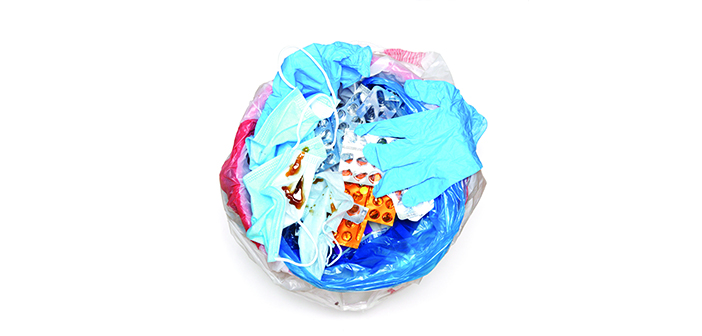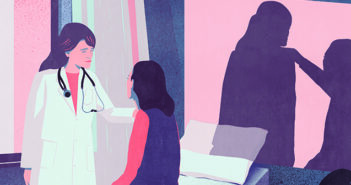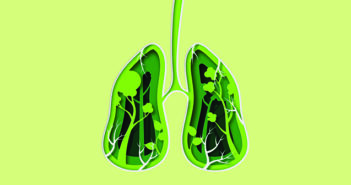Study quantifies environmental and economic impacts of discarded medical supplies.
Rhode Island emergency departments are throwing out hundreds of pounds and thousands of dollars of unopened medical supplies, harming both the environment and their bottom lines, a study found.
The findings, published in the American Journal of Emergency Medicine in September, tallied several weeks’ worth of waste collections at The Miriam and Kent hospitals. Katelyn Moretti F’20, MD, MS, assistant professor of emergency medicine, and Kyle Denison Martin F’19, DO, MPH, assistant professor of emergency medicine, clinician educator, led the study, partly out of their own interests in the impacts of climate change on health.
“The health care industry specifically is responsible for 8.5 percent of all emissions in the US, so we play a big role in carbon emissions nationally and worldwide,” Moretti says. She adds that Rhode Island in particular lags behind other states in addressing medical waste.
Martin says emergency providers have a close-up view of how consumption and waste directly contribute to emissions. Coauthors Daniel Hu ’21 MD’25, Marina Hahn MD’25, and David Dorfman MD’25 collected over 300 pounds of unopened supplies from bins throughout each emergency department. Approximately 45 percent of this waste was composed of components from intubation kits; the researchers extrapolated their yearly value at more than $150,000 and the equivalent of 5.79 tons of carbon dioxide—comparable to burning over 5,800 pounds of coal.
Waste can be exacerbated by understaffing, the authors say; usually, unopened supplies would be collected by nursing staff during a “clean sweep” prior to a thorough cleaning. However, that may not happen when nurses are pressed for time.
“If you’re understaffed, your emergency department is busy enough,” Martin says. “And when environmental services come through, they might not have the ability or the knowledge to restock items.”
Moretti says the student coauthors were vital to completing the study. Dorfman helped craft a presentation for Brown University Health to advocate for greater scrutiny over purchasing habits. Hahn, Hu, and Dorfman were stunned by the carbon footprint; they filled an entire conference room with waste and needed days to sort and calculate it.
“It gave me more insight into the administrative loops you have to jump through to get information about purchasing,” Hahn says. She hopes the study will help hospitals adjust purchasing so there are fewer wasted items and more money saved.
Hu recalls how daunting it was at first to learn the intricacies of hospital administration. “Just being able to talk to all these different departments and know what’s the best way of communicating with them was super helpful,” he says of his experience working on the study. It also gave him more confidence to approach similar analyses in ophthalmology, his intended specialty.
“It was cool that we saw how you could advocate for change from within the system,” Dorfman says. “We were even able to disseminate our findings to the wider community with a lot of interest in them, and it was rewarding to see that.”




